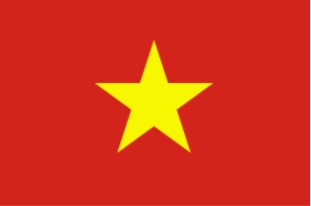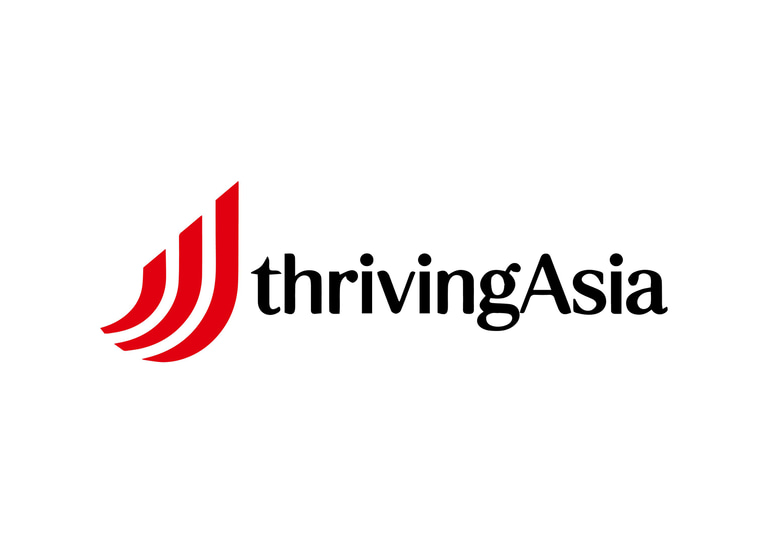Vietnam


Population: 101 million inhabitants.
GDP: Around USD 476 billion (2024), with strong growth (7% annually).
Demographics: Vietnam still benefits from a favorable “demographic window,” with a majority of its population of working age, though this is expected to end around 2040.
Urbanization: Ho Chi Minh City and Hanoi concentrate a large share of the population and economic activity, with rapidly developing infrastructure.
Connectivity: Over 78 million internet users (78% of the population) and massive adoption of social networks, creating a dynamic digital market.
Business Opportunities in Vietnam for Western SMEs (2025)
Key Growth Sectors in Vietnam (2025)
1. Manufacturing and Industry
Vietnam has become a preferred destination for the relocation of global value chains, particularly in electronics, textiles, automotive, and industrial equipment. Major corporations such as Samsung, Nike, and Toyota have already shifted significant production there. Key advantages include:
Competitive production costs compared to China or Thailand.
Free trade agreements (CPTPP, EVFTA) facilitating exports to Europe, the U.S., and Asia.
Expanding industrial infrastructure with special economic zones offering tax incentives.
Western SMEs can integrate as suppliers, subcontractors, or technology partners, especially in precision mechanics, electronic components, and innovative materials.
2. Technology and Digital Economy
Vietnam’s tech sector is booming, driven by a young, hyperconnected population (78+ million internet users) and a dynamic startup ecosystem. Key opportunities include:
Fintech & Digital Payments: Rapid adoption of mobile solutions, with increasingly favorable financial regulations.
E-commerce & Digital Logistics: The e-commerce market is expected to reach USD 13 billion by 2027, led by platforms such as Shopee, Lazada, and Amazon. SMEs can sell directly or provide SaaS and logistics solutions tailored to the local market.
Semiconductors & AI: Government investments and international partnerships (Intel, Qualcomm) position Vietnam as a future hub in Southeast Asia.
EdTech & HealthTech: Growing demand for digital education and healthcare solutions, accelerated by the pandemic.
The sector is strongly supported by government policies, incubators, and venture capital funds.
3. Renewable Energy and Green Transition
Vietnam targets 30% renewable energy in its energy mix by 2030, creating opportunities in:
Solar & Wind Energy: Vast potential in central and southern regions, with projects open to foreign investors.
Green Hydrogen & Energy Storage: Public and private tenders for innovative technologies.
Smart Grids & Energy Efficiency: Modernization of power networks and demand for intelligent solutions in cities and industries.
SMEs in green technologies, engineering, and consulting will find fertile ground as Vietnam seeks to reduce coal dependency.
4. Agriculture and Agri-Food
Vietnam is a global leader in agricultural exports (coffee, rice, seafood, cashew nuts), while domestic demand is shifting toward quality, traceability, and processed products. Opportunities include:
Premium Food Products: Growing appetite among the middle class for Western goods (cheese, wine, processed meats, healthy snacks).
AgriTech Solutions: Precision farming, smart irrigation, and food waste reduction technologies.
Export & Processing: Partnerships with cooperatives to export to Europe or develop value-added products (organic coffee, frozen tropical fruits).
The country is also testing sustainable agriculture projects in permaculture and agroforestry.
5. Infrastructure and Construction (BTP)
Huge infrastructure needs are creating opportunities:
Transport: Metro systems (Hanoi, Ho Chi Minh City), roads, bridges, and ports, often financed through PPPs. Foreign companies can bid or supply materials and technology.
Smart Cities: Development of smart cities (e.g., Hanoi, Da Nang) with demand for waste management, public lighting, and urban mobility solutions.
Green Buildings: Regulations promoting eco-friendly construction open markets for insulation materials, low-carbon HVAC systems, and integrated renewables.
6. Healthcare and Wellness
With an aging population and a growing middle class, the health sector is expanding:
Medical Equipment & Pharmaceuticals: Significant imports of medicines and devices, with opportunities for European SMEs in medical technology and generics.
Medical Tourism: Increasing numbers of foreign patients (from Thailand, Korea, Europe) attracted by competitive dental, cosmetic, and rehabilitation services.
Nutrition & Supplements: Rising demand for natural, organic, and functional products among urban youth.
7. Trade and Distribution
Vietnam’s middle class (approx. 30 million people) is increasingly drawn to Western brands. Distribution channels are evolving rapidly:
Modern Retail: Partnerships with local (VinMart, Big C) and international (Lotte, AEON) retailers for food, cosmetics, and fashion products.
Cross-Border E-commerce: Platforms like Amazon and Tiki enable SMEs to sell directly to Vietnamese consumers with simplified logistics.
Franchising & Retail: Coffee shops, fast food, fitness, and education franchises (languages, music) are growing in major cities.
8. Services and Consulting
Vietnamese businesses increasingly seek foreign expertise in:
Management & Innovation Consulting: Supporting local SMEs in digital transformation and international expansion.
Professional Training: Strong demand for managerial, language (English, French), and technical (engineering, tech) skills.
Financial & Legal Services: Compliance, tax optimization, and fundraising support for startups.
Why These Sectors Will Thrive in 2025?
Sustained Economic Growth: Vietnam targets GDP growth of 6.5–8.5% in 2025, driven by industry, services, and exports.
Favorable Government Policies: Reforms to simplify foreign investment, tax incentives, and support for strategic sectors (tech, green energy).
Dynamic Demographics: Young, connected, and increasingly affluent population with international-level expectations.
Regional Integration: Vietnam is at the heart of ASEAN, benefiting from trade agreements that provide access to a 650+ million consumer market.
Advantages for Western SMEs in Vietnam (2025)
1. Access to a High-Growth Market
Strong GDP Growth: Among the highest in Southeast Asia, offering fertile ground for SMEs.
Emerging Middle Class: Over 30 million consumers seeking modern products and services in tech, food, healthcare, and retail.
2. Competitive Costs and Skilled Workforce
Low Production Costs: 30–50% lower than China in manufacturing, with rising productivity.
Young, Trainable Workforce: Over 60% under 35, with high literacy and rapid tech adoption.
3. Trade Agreements and Export Facilitation
Privileged Access: CPTPP, EVFTA, and other agreements reduce or eliminate tariffs for exports to Europe, Japan, Canada, etc
Logistics Platform: Strategic location with improving ports and infrastructure.
4. Government Support and Tax Incentives
Tax holidays (2–4 years) and reduced rates (10% vs. 20%) in special economic zones or innovative projects.
Administrative reforms: Company setup now takes under 10 days on average.
Institutional support from MPI, VCCI, and foreign chambers (e.g., Business France, CCIFV).
5. Innovative and Digital Ecosystem
Over 78 million internet users, smartphone penetration above 70%.
Active startup hubs (VinTech City, Saigon Innovation Hub) offering coworking, funding, and investor networks.
6. Local Partnership Opportunities
Win–win collaborations with Vietnamese firms for distribution, networks, and market expertise.
Integration into Asian supply chains (electronics, textiles, automotive).
Key Challenges for Western SMEs
Administrative and Regulatory Complexity
Lengthy registration/licensing in regulated sectors (pharma, food, energy).
Local standards (QCVN, TCVN) may differ from EU/US norms.
Intensifying Competition
Strong presence of Chinese, Korean, and Japanese firms with cost advantages.
Increasingly competitive local firms in digital, food, and services.
Cultural and Language Barriers
Vietnamese remains dominant; interpreters or local managers are essential.
Business culture values personal trust and relationships over formal contracts.
Infrastructure and Logistics Constraints
Modern infrastructure in major cities, but rural areas remain underdeveloped.
Logistics costs remain higher than in Singapore or Malaysia.
Financing and Financial Risks
Local banks reluctant to lend to foreign SMEs; interest rates remain high (8–10% in 2025).
Currency risks with the Vietnamese dong (VND)
Human Resources & Talent Management
Shortage of advanced technical skills outside major cities.
High employee turnover; retention strategies are crucial
Legal Risks and Investment Protection
Weak IP protection; SMEs should register locally and monitor for counterfeits.
Lengthy, costly litigation; contracts should include arbitration clauses (e.g., Singapore, Hong Kong)
Geopolitical and Economic Risks
Dependence on exports makes Vietnam vulnerable to global trade tensions.
Inflation may pressure energy and labor costs.








